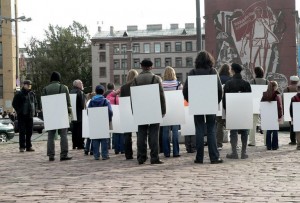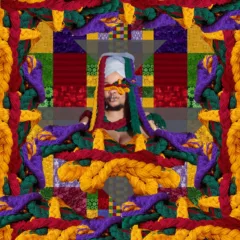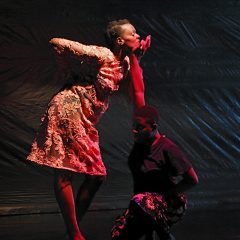Some artists fall through the cracks of history, and Lil Picard was one. The exhibition of her work, Lil Picard and Counterculture New York, at the Grey Art Gallery through July 10, 2010 is a revelation. She made feminist art ten years before the subject was acknowledged and created installations and performance art with the help of artists two generations her junior. She had 15 solo exhibitions in the U.S. and Germany during her lifetime, and her work was included in more than 40 group shows. The exhibition is a poignant reminder of the many omissions from the cannon. Anyone interested in art in New York in the late 1950s-1960s and feminist art should rush to see this exhibition.
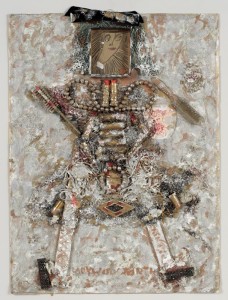
In 1937 Picard arrived in New York as a refugee from Berlin where she had performed in cabaret, befriended Dada artists Hugo Ball and Richard Huelsenbeck, and participated in various aspects of Weimar artistic activities. She survived by running a successful business as a milliner and later by working as a journalist, writing about contemporary American art for German and American audiences. Picard only began to study art in the 1940s when she took a class with Hans Hoffman, but by the 1960s she was actively involved in the downtown art scene where she frequented Warhol’s Factory and performed at Judson Church.
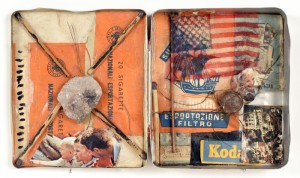
The most interesting work in the exhibition are her many collaged constructions, which owe a debt to her knowledge of Kurt Schwitters’ work as well as Rauschenberg’s Combines and probably Joseph Cornell’s boxes, and the relics and documentary photographs of her performances. She often incorporated dime-store cosmetics in the collages (thirty years before Janine Antoni), and made humorous commentary on stereotypical female roles. Lady Woolworth incorporates lipstick and brushes – the better to present herself – while pearls outline her breasts and pubis. She did anti-Vietnam War performances with the participation of the younger artists who circled around Judson Church’s performance space.
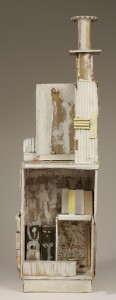
The exhibition re-inserts Picard within the art world of New York in the 1960s, and on Wednesday, May 5 three other participants in the same scene reminisced about her. Irving Sandler, critic and art historian, also used the word revelation to describe his reaction to the Grey exhibition, acknowledging that he neglected Picard in his writings. He remarked that she negotiated an amazing range of conflicting artistic movements, such as Hoffmann and Rauschenberg or Fluxus and Ad Reinhardt. Artist Carolee Schneemann responded that Picard was able to negotiate all those worlds because as a woman, she was negligible. Schneemann said that Picard was a free spirit within the world, and that a lot of the time her discussions with the older artist were about sex. John Perault said he knew her mostly as a journalist and performance artist. He saw her as an elder to whom he looked for experience, and recounted several versions of stories she told him, raising questions about the veracity of all story-telling.
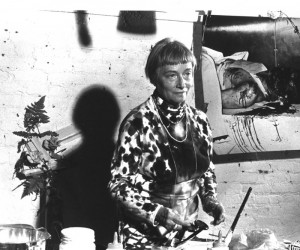
All the work is drawn from the collections of the University of Iowa Museum of Art and University of Iowa Library, to which Picard donated everything in her studio and archives, and was organized by Kathleen A. Edwards, UIMA’s chief curator. It’s wonderful that they have brought it to light, but in donating the entirety to a single institution Picard restricted its reach. The best-managed artist’s estate I know of, that of Gaston Lachaise, was intentionally spread around as many major museums as possible; consequently it is possible to see it across the country, and mostly on permanent view (large sculpture, once sited, tends to stay in place).
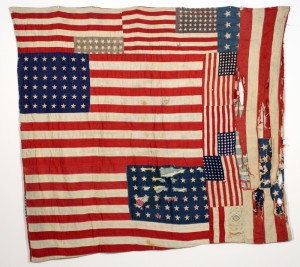
Conceptualism in the Other Europe
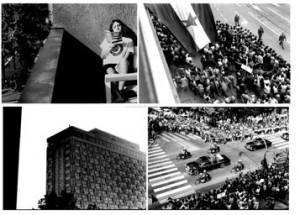
Some art has remained little-known because of the lingering effects of the Cold War, and we are slowly playing catch-up. A fascinating exhibition at Printed Matter makes a significant contribution. Hungry Man, reach for the book. It is a Weapon! was curated by the Zagreb collective, What, How & for Whom and is on view through May 22. It includes work described by writer, Stephen Wright, as having a low coefficient of visiblity: magazines, books and various printed matter produced by artists in Yerevan, Zagreb, Clij, Belgrade, Petersburg and Tashkent, both before and after the fall of the Berlin Wall. They also have books and zines by the artists available for sale. Some work from the Soviet block countries was introduced in the important exhibition, Global Conceptualism: Points of Origin, 1950s-1980s, organized by the Queens Museum of Art in 1999; this exhibition is a welcome extension of that pioneering investigation and extends it beyond the crucial date of 1989 and into the present
